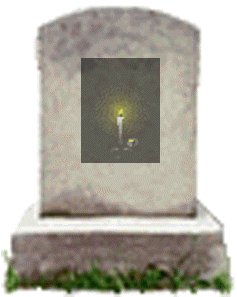|
  INDICTMENT AGAINST SRI LANKA INDICTMENT AGAINST SRI LANKA
The Charge is Ethnic Cleansing
THE MASSACRE IN TIRIYAI -
THE VILLAGE THAT DIED IN A DAY
15 JUNE 1985
 An extract
from a report by Simon Winchester in 'The Sunday Times
Magazine' of August 18 1985: An extract
from a report by Simon Winchester in 'The Sunday Times
Magazine' of August 18 1985:
"The village of Tiriyai a few miles north of the
famous old Royal Navy base at Trincomalee, is in normal
times a contented and pretty little place, best known for
its market where local farmers come to trade cashew nuts
and cattle. Eastern Sri Lanka is dry and sultry, and the
farms there are not especially prosperous, so none of the
2,000 villagers of Tiriyai has much money. But nobody
starves. Everyone gets along. The village, in spite of
its poverty, has an undeniable dignity, and serenity
about it.
Once in a while, tourists arrive, although the drive
is long and bumpy and there are enough stray elephants
around to make a lone driver rather nervous. ...But no
tourists visit Tiriyai today, and nor will they for many
years to come.
And since the terrible morning of June 15 last, hardly
anyone lives in Tiriyai either. The village has been
almost totally wrecked. Nearly every house, shop, farm
has been burned. Cattle have been butchered in the
fields. Such carts and motor-cycles as the villagers once
owned lie rusting on the sandy roadsides, smashed to
pieces, useless. Just a few people - old-women, bedridden
men and young children - remain, some still whimpering
with the memory of what happened on that fateful
Wednesday morning.
Just before eight, when the farmers were already out
in their fields and the women were attending to their
domestic routines, two army helicopters appeared in the
sky. They flew low over the village, and, without any
warning, opened fire with machine guns. Villagers ran,
in wild panic, into the low scrub that passes for
jungle in these parts. But as they did so, a convoy of
army trucks and buses appeared on the road from
Kuchchaveli town that in normal times is a seaside
resort well known to German and Dutch holidaymakers but
during the past year has been deserted, except for a
monstrous new army base.
Infantryman, fully equipped for battle, spilled from
the vehicles. Some were carrying jerrycans, others held
flaming torches. Systematically, they went from house
to house, pouring paraffin on to the grass roofs,
lighting them, moving on. They set animals free, and
shot them down. They stormed into the tiny library,
pulled out all the books - no more than a couple of
hundred at the most and made a bonfire of them. They
wrecked the half dozen International Harvester
tractors, and set fire to their wooden trailers.
And all the while, the villagers looked on from the
security of the jungle, watching with stunned amazement
as their community was destroyed. Many of them started
running, and ran and ran, deep into the forests, and have
not been accounted or since. Fewer than a hundred waited
until the marauders had gone at dusk and then crept back
to see what they could salvage. There was not much A few
sacks of paddy had escaped the inferno. A dozen houses
were hat table, though burned. But the school had gone'
and the post office. There was no food left in the two
shops which had in any case been utterly wrecked. And,
most terrible of all, the Hindu temple had been sacked,
and the images of Vishnu and Shiva had been mutilated and
broken....
Today, Tiriyai is almost wholly peopled by Hindus -
and specifically by the people of ancient Dravidian stock
who are known by the name of the language they and their
three million fellow Sri Lankans are wont to speak - the
Tamils. The soldiers who attacked the village on that
blistering morning were members of the island's majority
ethnic and linguistic group, the predominantly Buddhist
Sinhalese....."

|